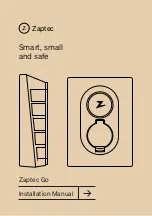
Uniform Tire Quality Grading
The following information relates to the tire grading system developed by the National Highway
Traffic Safety Administration (NHTSA), which grades tires by tread wear, traction and
temperature performance. Tires that have deep tread, and winter tires, are exempt from these
marking requirements.
Where applicable, quality grades are found on the tire’s sidewall between the tread shoulder
and maximum section width. For example:
• TREADWEAR 180
• TRACTION AA
• TEMPERATURE A
The quality grades are described next.
NOTE:
In addition to the marking requirements, passenger car tires must conform to Federal
Safety Requirements.
Treadwear
The treadwear grade is a comparative rating based on the wear rate of the tire when tested
under controlled conditions on a specified government test course.
For example, a tire graded 150 wears one and a half times better on a government test course
than a tire graded 100. The relative performance of tires depends on the actual conditions of
their use, however, and can depart significantly from the norm due to variations in driving
habits, service practices, road characteristics, and climate.
Traction
The traction grades, from highest to lowest, are: AA, A, B, and C. These grades represent a tire’s
ability to stop on wet pavement as measured under controlled conditions on test surfaces of
asphalt and concrete. A tire marked C might have poor traction performance.
WARNING:
Defective tires are dangerous. Do not drive if a tire is damaged, excessively
worn, or is inflated to an incorrect pressure. The safety of the vehicle and occupants can
be adversely affected. Check tires regularly for wear and to ensure there are no cuts,
bulges or exposure of the ply/cord structure.
WARNING:
The traction grade assigned to the tire is based on straight-ahead braking
tests, and does not include: acceleration, cornering, hydroplaning or peak traction
characteristics.
Temperature
The temperature grades are A (the highest), B, and C, representing the tire’s resistance to the
generation of heat and its ability to dissipate heat when tested under controlled conditions on a
specified indoor laboratory test wheel. Sustained high temperature can cause the tire to
degenerate and reduce tire life, and excessive temperature can lead to sudden tire failure.
The grade C corresponds to the minimum level of performance that all passenger car tires must
meet under the Federal Motor Safety Standard No. 109. Grades B and A represent levels of
performance on the laboratory test wheel that exceed the minimum requirements.
Wheels and Tires
242
MODEL X Owner's Manual
Содержание MODEL X 2021
Страница 1: ...MODEL X 2021 OWNER S MANUAL Software version 2022 12 North America...
Страница 318: ...Publication date 2022 4 14...
















































